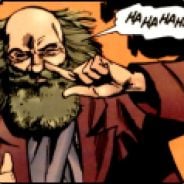¿
When reading out loud it’s helpful to know right away that the sentence you’re starting is a question.
I really like that in a longer sentence, you can tell exactly where the question part starts.
That would be a good feature to have, ¿ wouldn’t it?
Not even spaniards use them in nonformal written format my dude.
Pause interrogatives and interrogative starting marks - aka ,? and ¿
Interrogative starting marks are extremely useful for clarity and pause interrogatives better align with natural speech.
Eh buddy, me and Bob were thinking of heading down to Timmes. ¿Do you want to come,? there’s a sale on the chili.
!Yes, please!
I often preface questions and exclamations with a couple question marks/exclamation points to help clarify! Very useful.
To express a range of numbers, Korean (and likely other Asian languages) will use a tilde instead of a dash or hyphen. To me, that better expresses that we’re talking about an indeterminate value or a range. Especially when we use ~ for “about”, as in ~$20 for something that costs $17.99 before tax, for example.
Dining out costs like 20~40 dollars per person!
Whereas “20-40” looks too similar to a subtraction equation or a hyphenated word to me.
In properly formatted text, you use en dash for ranges.
En dash: 20–40
Hyphen: 20-40
Some (most?) modern text editors will substitute two hyphens with an en dash, so you can easily generate them by typing
--.(I get your point though! Just wanted to point out that there are much nicer and more appropriate glyphs than the hyphen.)
En dash is very useful for
Dates (3–20–25)
Subtraction (although I think math script uses its own unique dash?) (7 – 1 = 6)
Value ranges ($20–40)Then of course there’s the beautiful—and slightly different—em dash!
ISO 8601 or GTFO
Even with the en dash, it looks like subtraction to me! Haha
An em dash wouldn’t, but that would also probably be too wide
USA English also uses ~ before a number to signify “about” in informal contexts. “It costs ~$20”.
Chemistry has a weird one for this: “ca. 20 mL” means “about 20 mL” and I never found out why.
Circa?
Maybe, I usually only hear that in relation to time / maybe I’m not remembering it right, or maybe chemists apply it to amounts as well
Same, but it does mean ‘around’ or ‘approximately’, so would still work in this context.
I feel like the interrobang ‽ is highly underutilised.
Wow I wonder if I can even find it on the keyboard‽
took quite a while lol.
I wish it was on basic keyboards. I love ?! but I am in love with ‽ .
I’ve always liked § and ¶. I also don’t see people using ≈ and ~ in context enough. They’re fun to write.
Edit: Almost forgot this guy, too: ‽
I like the equals sign with three lines to mean “x is defined to be y.”
I’m not sure if a ≈ with three lines already has a meaning, but if it doesn’t, maybe it should mean “x is defined as similar to y.”
I want uppercase numbers
A parentheses-like mark to group parts of a sentence when it’s not clear which part a word belongs to. An example I saw lately that may not translate very well: “You are required to arrive an hour early so there’s time to do x, do y and do z”. Are you required to do y and z or do you just need the extra time to do them? You can usually tell from context but this type of mixup does happen sometimes.
In English I’m not sure how you could interpret that sentence in a way where you didn’t have to do y or z, but it is unclear whether it is just x that takes a long time, or if all three things do.
Yeah it’s not a great example, the difference could be on whether you’d have to do y and z before getting there or they’d give you the materials to do them on the spot. Say signing a form they provide vs finding it, printing it and bringing it with you.
/s is an interesting addition and could use a glyph






